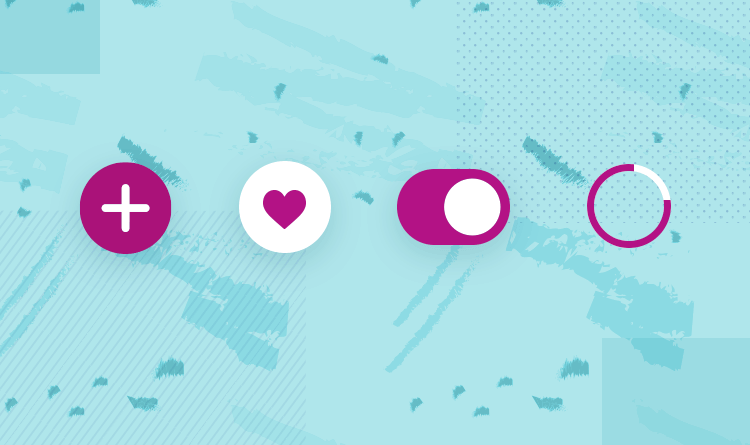Incorporating Microinteractions to Enhance User Engagement
Introduction
In today’s digital landscape, user engagement plays a crucial role in the success of any online platform or application. With millions of websites and countless mobile apps vying for attention, it has become increasingly challenging for businesses to capture and retain the interest of their users. This is where microinteractions come into play. Microinteractions refer to those subtle, often overlooked design elements that provide feedback and create a sense of responsiveness in user interfaces. By incorporating well-designed microinteractions, developers and designers can enhance user engagement and create memorable experiences that keep users coming back for more.
Microinteractions are small, yet powerful, moments that occur within the user interface. They can be as simple as a button changing color when hovered over or as complex as a progress bar indicating the status of a file upload. These tiny interactions may seem insignificant individually, but when combined, they contribute to a seamless and engaging user experience. Microinteractions add a layer of interactivity and playfulness to an application, making it more enjoyable and satisfying for users to interact with. Whether it’s the satisfying sound of a notification alert or the smooth transition between screens, these small details can make a significant impact on how users perceive and interact with a product. In this article, we will explore the various ways in which microinteractions can be incorporated to enhance user engagement and improve overall user satisfaction.
Understanding User Engagement
Understanding user engagement is essential for any business or organization that aims to succeed in the digital realm. User engagement refers to the level of interaction, involvement, and emotional connection that users have with a product, platform, or website. It goes beyond mere clicks and page views, focusing on how users actively participate and invest their time and attention in the digital experience.
Measuring user engagement involves analyzing various metrics such as time spent on the platform, frequency of visits, click-through rates, and social media shares. However, true user engagement extends beyond quantitative data. It encompasses qualitative aspects like user feedback, satisfaction, and the overall experience. By understanding the factors that drive user engagement, businesses can tailor their strategies to create a more compelling and immersive experience that resonates with their target audience.
User engagement is a crucial factor in determining the success and sustainability of digital products and services. Engaged users are more likely to be loyal customers, advocate for the brand, and provide valuable feedback for improvement. Additionally, high levels of user engagement can lead to increased conversions, improved brand perception, and a competitive advantage in the market. Therefore, it is vital for businesses to invest time and resources into understanding user engagement and implementing strategies to enhance it effectively.
What are Microinteractions?
Microinteractions are the subtle, nuanced design elements that add a layer of interactivity and responsiveness to user interfaces. They are the small details that make a significant impact on the overall user experience. Microinteractions can be found in various forms, such as button animations, hover effects, loading spinners, progress bars, sound notifications, and more. These tiny interactions provide feedback to users, acknowledge their actions, and create a sense of engagement and satisfaction.
Microinteractions serve multiple purposes. They can guide users through a process, provide feedback on their actions, and communicate the system’s status or changes. For example, a microinteraction like a progress bar during a file upload visually indicates the completion status, keeping users informed and engaged. These subtle design elements contribute to the overall usability, intuitiveness, and delight of a digital product or application. By paying attention to and carefully crafting microinteractions, designers and developers can create more immersive and engaging user experiences that captivate and retain users’ attention.
The Benefits of Incorporating Microinteractions
Incorporating microinteractions into user interfaces brings a multitude of benefits for both users and businesses alike. Firstly, microinteractions enhance user engagement by creating moments of delight and satisfaction. These small, interactive elements add a layer of interactivity and playfulness, making the user experience more enjoyable and memorable. Users feel more connected to the interface as they receive instant feedback and response to their actions, leading to a sense of accomplishment and increased engagement.
Secondly, microinteractions improve usability and guide users through processes and interactions. They provide clear visual cues and feedback, helping users understand the system’s status, progress, or changes. Whether it’s a subtle animation that indicates a successful action or a hover effect that highlights interactive elements, microinteractions make the user interface more intuitive and user-friendly. By enhancing usability, businesses can reduce friction, increase efficiency, and ultimately improve user satisfaction, leading to higher conversion rates and customer retention.
Enhancing User Experience with Microinteractions
Microinteractions play a crucial role in enhancing the user experience by adding depth, interactivity, and delight to digital interfaces. These small design elements provide immediate feedback, acknowledge user actions, and create a sense of responsiveness. By incorporating well-crafted microinteractions, designers can create a more engaging and memorable experience for users.
Microinteractions contribute to the overall usability of a product by guiding users through different interactions and processes. For example, a microinteraction like a subtle animation on a button click can provide visual confirmation, reassuring users that their action was successful. Additionally, microinteractions can bring a sense of joy and surprise to the user experience, making it more enjoyable and memorable. From playful hover effects to clever loading animations, these small details can create a positive emotional connection with users, ultimately enhancing their overall satisfaction and loyalty to the product or platform.
Types of Microinteractions to Consider
In web design, there are various types of microinteractions that designers can consider incorporating to enhance the user experience. One type is hover effects, which occur when users move their cursor over an element. These effects can include changes in color, size, or opacity, providing visual feedback and indicating that an element is interactive. Hover effects add a layer of interactivity and engagement, guiding users and encouraging exploration.
Another type of microinteraction is the use of animated transitions and transformations. These microinteractions help create smooth and seamless transitions between different states or screens. For example, when navigating between pages, a subtle animation can be used to indicate the loading progress or provide a visual connection between the previous and current content. Animated transitions add fluidity and enhance the perception of continuity, making the user experience more polished and enjoyable.
Other types of microinteractions in web design can include scroll animations, form validation feedback, notification alerts, progress bars, and subtle sounds. The key is to choose microinteractions that align with the overall design aesthetic and user goals while providing meaningful feedback and enhancing the overall user experience.
Conclusion
Incorporating microinteractions into web design is a powerful strategy for enhancing user engagement and improving the overall user experience. These subtle design elements add interactivity, responsiveness, and delight to digital interfaces, making the user journey more enjoyable and memorable. By providing immediate feedback, guiding users through processes, and creating moments of surprise and satisfaction, microinteractions contribute to increased user engagement and satisfaction.
The benefits of incorporating microinteractions are manifold. They enhance usability, making interfaces more intuitive and user-friendly. They also create a sense of connection and emotional resonance with users, fostering loyalty and advocacy. Moreover, microinteractions can differentiate a website or application from competitors, leaving a lasting impression on users and increasing the likelihood of repeat visits



